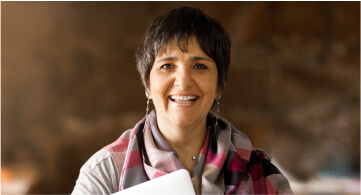CRAFT A RESPONSE TO EACH OF THE FOLLOWING ASSIGNED COLLEAGUES (4 in total): Your response should be a minimum of 150 words (per response), and also include in-text citations and References that conform to APA style guidelines.
Your response to your colleague should go beyond I agree with your point … or I like how you…. your responses should clearly include (THIS IS A MUST):
*At least one specific suggestion for how your colleagues’ substantive response could be improved by including additional information or taking an alternative approach to the week’s prompt. Please re-read and take note of the last sentence.
PLEASE RETAIN THE EXACT ORDER THE RESPONSES WERE GIVEN IN!
Length (2 pages)
RESPSONSE #1
INTRODUCTION
Throughout the years we have seen many cases of disabled persons wanting accessibility to public buildings, workplaces, and most of all public transportation. Places that were not accessible became a great obstacle in acquiring the rights and freedom of the disabled group. In an interview with Ed Roberts, he indicated how people with disabilities required the right to live outside institutions, they wanted an end to discrimination in employment and long-term healthcare that included well-trained and well-paid attendants enabling them to function in the world of the able-bodied†(CBS, 1989).
BACKGROUND
In an article, Danforth (2018), mentioned a group of disabled students who called themselves the ‘Rolling Quads in the 1960s [formulated the development of over] four hundred independent living centers across the United States and the enactment of the first national disability anti-discrimination law, section 504 of the Rehabilitation Act of 1973†(pg. 509). With the group’s “political energy and intent†they were able to organize and create a movement†a movement that initiated changes to their education and the way they lived (Danforth, 2018, pg. 507). The ‘Rolling Quads’ [led by Ed Roberts] cultural awareness was seen in roles and expectations shared freely amongst them as a community who dealt with the same experiences and the need for accessibility and independence. Their “goal was not merely to navigate themselves through the university themselves but to change the campus so that other physically disabled students could be successful in the future†(Danforth, 2018, pg. 513).
CHALLENGES
Administration had set rules and guidelines for disabled students to stay in school. “They had to maintain a B average, meet and discuss grades before choosing a course for next semester, take at least twelve credits per semester year and if they wished to withdraw or make schedule changes, they need approval from their counselor†(Danforth, 2018, pg. 521). Madaus (2011), even stated that the administration for war veterans with disabilities required “documentation of disabilities, reasonable accommodations, definitions of major life activities and the impact of mitigating measures on the impact of disability†(pg. 11).
METHODS
With budget cuts created by administration, the Rolling Quads fought for jurisdiction and management because they were tired of unsupported services that were promised to them and then taken away based on discrimination. The fight they led could not ne attempted by one person, which Ed Roberts tried to do when he first was enrolled at the University of California, Berkeley. It took a group of dedicated disabled students to organize and create a movement, write letters and lead protests.
Later with funds from the Department of Education they were able to provide services from their program, which guided other disabled students. These services were and up to this day are “peer counseling, course pre-enrollment, moving classes to accessible buildings, personal attendant referrals and training, assistance finding accessible housing, wheelchair repair and loaner electric wheelchair, guidance navigating social service agencies and local wheelchair-accessible transportation†(Danforth, 2018, pg. 510).
These offices not only provide each disabled student or disabled veteran with services, but they respect each individual rights to get them out of institutions and be given the chance learn, to move forward with their lives.
References
Danforth, S. (2018). Becoming the rolling quads: Disability politics at the university of California, Berkeley, in the 1960s. History of Education Quarterly, 58(4), 506-536
Madaus, J. W. (2011). The history of disability services in higher education. New Directions for Higher Education, 154(1), 5-15.
CBS. (1989). 60 Minutes Segment: Ed Roberts, Activist, with Harry Reasoner. Retrieved from Minnesota Governor’s Council on Developmental Disabilities. https://mn.gov/mnddc/ed-roberts/sixtyMinutes.html
RESPSONSE #2
Good Afternoon Dean David Martin,
Thank you for reaching out. Adding an office that specifically serves your students with disabilities would be a great addition to your campus. Statistically, students with disabilities can make up about 19% of the population attending undergraduate courses, (National Center for Education Statistics, 2021). This is a large part of the student body that could benefit from additional resources to help them achieve their educational goals. I understand that you already have a working knowledge of the legislation in place, so I will focus more on the information that you are after.
Around the time of the Civil Rights Movement, those with disabilities were also seeking some liberation. They wanted to be seen as part of society and not just something that the medical community needed to “fix†or “cureâ€. Part of this was being able to have the college experience of living on campus, like everyone else. In 1962, Ed Roberts became the first student with a severe disability to live on a college campus. His housing was just the third floor of Cowell Hospital, the on-campus medical facility. This ended up inviting more students with disabilities to enroll at the University of Berkeley. Once the students realized that there was a demand, they formed the Center for Independent Living (CIL). You can think of the center as one of the first disability service offices. It connected students with disabilities with caretakers and resources on finding housing that worked for them. They were feeling like they could be a part of the college community and society.
As you know, time progressed and more legislation came into place that provided individuals with disabilities rights and the ability to engage in society with everyone else. Things like Section 504 of the Rehabilitation Act and the ADA provided legislation that allowed students with disabilities to request “reasonable accommodations†at their institutions to participate in their courses on the same level as their peers. Examples of accommodations include alternative text formats, like Braille for those who are blind, and alternative mouse devices for those with mobility issues. All of these accommodations can be set up using a disability service office. Students can have a place to turn to when they need additional resources and accommodations for their college courses. These offices are staffed by individuals that are experts in the field of disability studies and will work with students on an individual basis to get them all the tools they need to be successful in their college careers. The disability services of higher education that are closer to what we offer today can be traced back to the late ’80s and the formation of the Association on Handicapped Student Service Programs in Postsecondary Education. That organization today is called Association on Higher Education and Disability or AHEAD.
Additionally, you want to think of students with disabilities as another subgroup at your institution. You probably already have a Black student union, an International Students Office, or an Adult Services center. This is much of the same thing. You want to offer facilities for every type of student that attends your institution. Can students with disabilities use these other facilities? Of course, having a center for disabilities will target their needs and wants specifically. The population of students with disabilities will continue to grow, as well as how to best serve this population. You will want to be on the cutting edge with new assistive technology and appropriate student services.
I am happy to discuss this more with you at a later date. This is just a brief overview as to why having a disability services office would be beneficial to your institution. Please set up a time to meet and I will be happy to go over what an office looks like and what services it would provide.
Thanks,
References
Danforth, S. (2020, January 22). Becoming the Rolling Quads: Disability Politics at the University of California, Berkeley in the 1960s. Retrieved from the University of Illinois at Urbana-Champaign Library: https://www.cambridge.org/core/terms. https://doi.org/10.1017/heq.2018.29
Madaus, J. W. (2011). The History of Disability Services in Higher Education. New Directions for Higher Education, 5-15.
National Center for Education Statistics. (2021). Students with Disabilities. Retrieved from Fast Facts: https://nces.ed.gov/fastfacts/display.asp?id=60#:~:text=How%20many%20students%20in%20postsecondary,20%20percent%20for%20female%20students.
RESPSONSE #3
Good morning, Dean David Martin,
My name is J, and I’m a disability advocate. I’m writing to request permission to lead the initiative to establish a separate office space that will serve students with disabilities. The Disabilities Support Center is a space that will provide support and opportunities for students with disabilities. The number of students with learning disabilities enrolled in post-secondary institutions has consistently increased throughout the years. Students with psychological/psychiatric disabilities, veterans with disabilities, and those with autism spectrum disorders, for example, may necessitate special consideration. As a result, “new responsibility is placed on institutions, necessitating new services and policies considerations for students with disabilities.†(Madaus, p. 6). Regardless of background, all students deserve inclusion, which will help them succeed in higher education.
It is critical to assist students with disabilities because, as John Hessler puts it, “the accommodations will make the opportunity a reality. Without the accommodations, there is no reality or opportunity that can be fulfilled†(Danforth, p. 532). This dedicated office space will create a safe and supportive setting that will remove barriers to their learning experience resulting in educational success. Creating an accessible, inclusive, and diverse learning environment for students with disabilities to express their concerns is another step toward improving one’s life quality. Circumstances that can be addressed may include accessible dorms, classes, accommodations (assistive technology), and educational experience. This dedicated office space can be an asset for campus administration as they advance and transform such services.
I understand that attaining this separate office space to support students with disabilities may not be easy. Individuals with disabilities had to overcome societal and political hurdles in the past since they were “largely isolated.†(Madaus, p.6). I want to eliminate the fear of isolation, stigma, and discrimination within the disability community, as veteran students with disabilities and the Rolling Quads have done in the past. Veterans with disabilities, for example, “were able to attend college and learn about the industry, trade, and agriculture following World War I and the Vocational Rehabilitation Act of 1918 which provided educational assistance for veterans with disabilities†(Madaus, p.6). Due to an increase in college enrollment, “veterans made up 52 percent of the overall college population in the United States due to this legislation†(Madaus, p.6). As a result, “having a perceptible effect on the development of early disability services, the civil rights movement, and legislation.†(Madaus, p.8-9)
On the other hand, the “administration was convinced that paraplegics simply couldn’t do the work†(Madaus, p.7). The administration did not think highly of veteran students with disabilities. Discrimination was rampant, and veteran students returning from duty in the military were not immune. Unfortunately, the administration questioned severely disabled students’ abilities in regular college programs and saw it as a waste of time and effort because there was little evidence to suggest that seriously disabled students would excel academically or be able to use their education after graduation.†(Madaus, p.7)
Individuals with disabilities are increasingly being mistreated as their population grows. Rolling Quads began as a campus-based, college student activist group at the University of California, Berkeley, fighting for two undergraduate students to provide access and support. The Rolling Quads quickly expanded into a “foundational alliance behind the American disability rights movement†(Danforth, p.509). The Rolling Quds left a “lasting impression on campus by establishing the university’s disability services program.†(Danforth, p.535)
According to Danforth, “nationally, the trend on campuses was gradually shifting toward the establishment of disability support offices, particularly after the implementation of Section 504 of the Rehabilitation Act in 1977. The establishment of a campus disability services office at UCB was undoubtedly accelerated by the Rolling Quads ahead of its time†(Danforth, p.535). Students in our generation have similar concerns to those that existed in the past, for example, “students with disabilities frequently shared their thoughts and feelings about the stigma and rejection they encountered, as well as the positive lives of social inclusion they hoped to gain.†(Danforth, p.508). However, the actions of the Rolling Quads led to an opportunity to challenge the “dominant cultural understanding of people with disabilities as incompetent, incapable, and requiring supervision by nondisabled people with the emerging, non – conventional concept that people with disabilities were valued and competent citizens who could direct their affairs†(Danforth, p.525).
According to Danforth, “in the post-secondary institutions and vocational rehabilitation institutions defied common-sense cultural assumptions about the abilities of physically disabled people and the possibilities for their integration and success in mainstream forms of economic and civic participation, with significant guidance from the students themselves†(Danforth, p.534). The Rolling Quads were able to establish an “independent living movement that was federally funded and expanded nationwide, and disability self-help centers†(Danforth, p.535).
Your approval of the separate office space will significantly impact many people’s lives. I hope you will give this careful thought. Every student deserves the same equal opportunities in post-secondary institutions, including access, diversity, and inclusion. I hope to make a difference in the same way that other advocates have in the past. I hope to have a seat at the table to help put the necessary changes and resources for students with disabilities. Thank you for taking the time to read my email in advance.
Regards,
References
Danforth, S. (2018). Becoming the rolling quads: Disability politics at the university of California, Berkeley, in the 1960s. History of Education Quarterly, 58(4), 506-536. Danforth-2018 Rolling Quads.pdf
Madaus, J. W. (2011). The history of disability services in higher education. New Directions for Higher Education, 154(1), 5-15. Madaus History.pdf
RESPSONSE #4
Dear Dean David Martin, Thank you for reaching out regarding implementing a dedicated office to serve students with disabilities on our campus. I am happy to provide you with some historical and social context regarding the creation of these offices and why we should prioritize building our own. You are right that many offices for students with disabilities predate the ADA, and that disabled student activism played a large role in solidifying these offices, as well as fighting stereotypes held by some faculty and administrators regarding the abilities of disabled students in college. As I’m sure you know, the number of disabled individuals and/or individuals with disabilities increased dramatically after World War I; many disabled veterans then went on to pursue education with the creation of the GI Bill (Madaus, 2011). With this came the realization that many aspects of higher education were inaccessible, such as transportation to and from colleges, college housing, and classroom assignments; schools that were located near veterans hospitals began offering disability related services to veterans attending colleges, despite some discriminatory pushback from administrations, which was countered by disabled student activists (Madaus, 2011). In addition to disabled veterans entering higher education, another contributing factor to the development of disability services offices was civil rights legislation such as the Rehabilitation Act of 1973, which created the anti-discrimination protections of Section 504 (fought for and passed due to disabled activism and protest), and the Americans With Disabilities Act (Madaus, 2011). As more and more students with learning disabilities, who were being provided K-12 services as now legally mandated, transitioned into higher education, offices dedicated to disabled students became even more crucial (Madaus, 2011). Another worthwhile mention is the connection between the development of independent living centers, fought for by disabled student activists like the University of California Berkley’s (UCB) Rolling Quads, and their influence on demanding accessibility on campus as well as changing attitudes on disability and substantially influencing politics (Danforth, 2018). The Rolling Quads created the Physically Disabled Students Program at UCB (Danforth, 2018), which you may have heard of. As more disabled students and/or students with disabilities enter college, it is imperative that we prioritize not only ensuring accessible education experiences through disability services, but in celebrating the diversity of disability across campus. Our college is prioritizing diversity, equity, and inclusion efforts with the creation of our new DEI office, and disability must be part of DEI conversations. Creating an office dedicated to supporting disabled students is long overdue. Please let me know if you would like to discuss this further, or if you’d like me to send you additional resources to help support your decision. Sincerely, Lindsay Infantino References Danforth, S. (2018). Becoming the rolling quads: Disability politics at the university of California, Berkeley, in the 1960s. History of Education Quarterly, 58(4), 506-536. Madaus, J. W. (2011). The history of disability services in higher education. New Directions for Higher Education, 154(1), 5-15.







